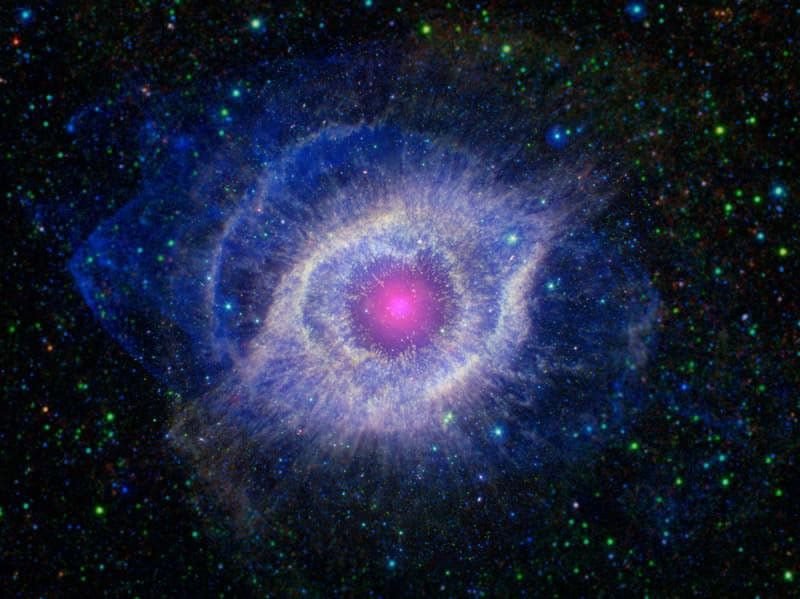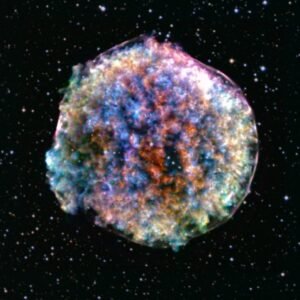
Every star eventually runs out of fuel. At the heart of a star, the steady conversion of hydrogen into helium through nuclear fusion produces the energy that balances gravity’s inward pull. But once the hydrogen in the core is exhausted, gravity begins to win. The core collapses, its pressure and temperature rise, and the star swells outward. What happens next depends largely on the star’s mass.
The Fate of Low-Mass Stars
For smaller stars like our Sun, the outer atmosphere continues to expand, transforming the star into a subgiant and later a giant. In its core, helium fuses into carbon, while the star’s outer layers grow unstable. Some of these giants pulsate—expanding and contracting—before eventually shedding their atmospheres into space.
This process creates a glowing shell of gas and dust known as a planetary nebula. One of the most striking examples is the Helix Nebula (NGC 7293), located 650 light-years away in Aquarius, imaged here in bluish-purple hues by NASA’s telescopes.
At the center of the nebula lies the star’s former core, now a white dwarf—a dense, Earth-sized ember that slowly cools and fades over billions of years. This is the destiny that awaits our Sun in several billion years.
The Fate of Massive Stars
High-mass stars follow a more violent path. After burning hydrogen into helium and helium into carbon, they continue fusing heavier elements: oxygen, neon, magnesium, and beyond. For the most massive stars, the process marches all the way to silicon fusion, which produces iron in the core.
But here lies the limit. Unlike lighter elements, fusing iron does not release energy—it consumes it. With no fuel left to support the star against gravity, the iron core collapses in seconds. Forces inside the nuclei briefly halt the collapse, triggering a rebound that sends a shock wave racing outward. The result is one of the most dramatic events in the universe: a supernova explosion.
One famous remnant of such an event is Tycho’s Supernova, first observed in 1572 in the constellation Cassiopeia. In this composite image, NASA’s Chandra X-ray Observatory reveals the glowing debris left behind from that stellar death.
Cosmic Recycling
The supernova’s aftermath leaves behind an incredibly dense remnant: either a neutron star—a city-sized core of collapsed matter—or a black hole, where gravity is so intense that not even light can escape. Meanwhile, the explosion blasts heavy elements like carbon, oxygen, and iron into space.
This ejected material enriches the galaxy, seeding new molecular clouds with the raw ingredients for future stars, planets, and even life itself. In this way, the death of one generation of stars becomes the foundation for the next—a cosmic cycle of creation and destruction that has shaped the universe for billions of years.

